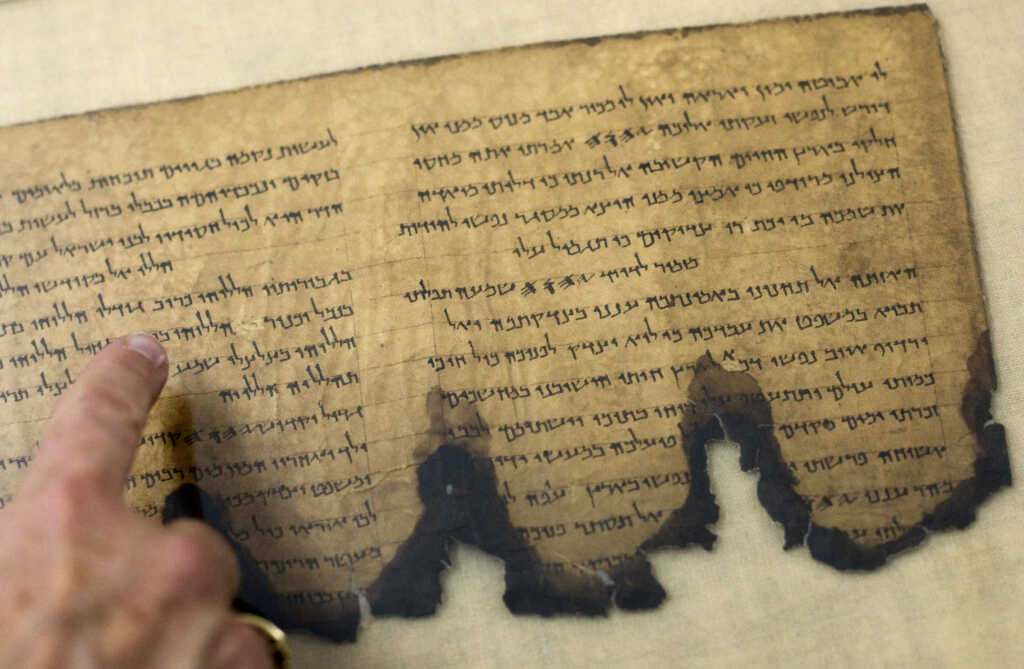Dr. Bobby Duke, chief curatorial officer at the Museum of the Bible in Washington, D.C., is previewing a new exhibit coming to the museum in November: a powerful exploration of the Dead Sea Scrolls.
Listen to the latest episode of “Quick Start” 👇
Duke told CBN News the significance of the biblical manuscripts and why the discovery has revolutionized biblical understanding.
“Before 1947, our best Hebrew manuscripts came from about 1,000 AD,” he said. “And when the first cave was found there at Qumran in 1947, it shaved off 1,000 years of manuscript transmission and let us see what the Hebrew Bible was like, what scrolls were like around the time of Jesus and the disciples.”
The scrolls were found by accident in the 1940s, with the discovery transforming understanding of original biblical texts.
“In late 1946 or early 1947, Bedouin teenagers were tending their goats and sheep near the ancient settlement of Qumran, located on the northwest shore of the Dead Sea in what is now known as the West Bank,” History reported. “One of the young shepherds tossed a rock into an opening on the side of a cliff and was surprised to hear a shattering sound.”
Inside the cave were clay jars filled with scrolls. Other scrolls were later found in additional nearby caves, with every Old Testament book outside of Esther being represented among the findings. The date of the scrolls proves how the texts were well-preserved over time.
Duke, a biblical expert, said his personal studies of the Dead Sea Scrolls have given him “more confidence in the Bible,” especially regarding the significance of the English translations many read today.
“It does give us a sense that the English translations we’re reading today are based on wonderful manuscripts that go all the way back to the time of the New Testament,” he said.
Duke said visitors to the Museum of the Bible will have the chance to explore the Dead Sea Scrolls as part of the 75th anniversary tour organized by the Israel Antiquities Authority. In addition to scroll fragments, people will also see other elements from Jerusalem.
“It will have wood fragments from what is often called the Jesus boat,” Duke said. “It’s a first-century boat that would have been very much like the boats Jesus and the disciples would have used on the Sea of Galilee. And really one of the highlights is, [for] the first time on the East Coast ever, [is] the Magdala stone that was found at the site of Magdala, the hometown of Mary Magdalene.”
There will be other highlights as well — pieces of the archaeological puzzle that will help people better understand the Bible and the early church.
“The scrolls give us a window into just how dynamic the society was 2,000 years ago,” Duke said. “We sometimes think of Sadducees, Pharisees, but there were so many more groups than that, and even this group at Qumran most likely was what Josephus calls Essenes. We see this dynamic, and it was into that world that Jesus and the disciples were spreading the news of the Messiah having come.”
The massive impact of the Dead Sea Scrolls, in particular, isn’t lost on Duke, who said the Great Isaiah Scroll is one of the most impactful.
“This great scroll … has the entire book of Isaiah, all 66 chapters,” Duke said. “But I’ll often zoom in to the first column where you have Isaiah 1:17 that talks about taking care of the orphans and the widows and all of that.”
He continued, “That message that Isaiah wrote in the 8th century that we see on the Dead Sea Scrolls from 2,000 years ago is still a message we have today. So, just to think, even our Christian practice of what we do good in the world is something that we can see on these scrolls from 2,000 years ago, just like we can read in our Bibles today.”
Dead Sea Scrolls: The Exhibit opens November 22, 2025, and runs through September 7, 2026.
As the number of voices facing big-tech censorship continues to grow, please sign up for Faithwire’s daily newsletter and download the CBN News app, developed by our parent company, to stay up-to-date with the latest news from a distinctly Christian perspective.



